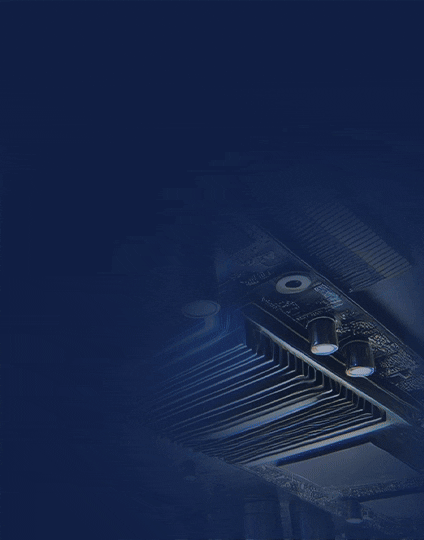In today’s fast-paced industrial landscape, equipment downtime can result in significant financial losses and operational inefficiencies. Traditionally, maintenance strategies have relied on reactive or preventive measures, often addressing issues after a failure or on scheduled timelines, regardless of equipment condition. However, with the rise of artificial intelligence (AI) and machine learning technologies, predictive maintenance is revolutionizing the way industries manage and maintain their assets.
Predictive maintenance uses data-driven insights to predict equipment failures before they happen, allowing for timely interventions that reduce downtime and minimize costs. Leveraging AI, this approach moves beyond the limitations of traditional methods by analyzing vast amounts of real-time data, identifying patterns, and predicting potential breakdowns with remarkable accuracy. The combination of AI-powered algorithms and precise test and measurement systems is key to unlocking the full potential of predictive maintenance.
In this blog, we’ll explore how AI-powered predictive maintenance is transforming industries, the crucial role that test and measurement play in this process, and the benefits and challenges associated with implementing this technology-driven approach.
The Role of AI in Predictive Maintenance
Artificial intelligence (AI) has emerged as a game-changer in predictive maintenance, enabling industries to move from reactive to proactive strategies. Traditionally, maintenance schedules were either reactive where equipment was repaired after failure or preventive where routine maintenance was carried out based on time intervals, regardless of the machine’s actual condition. AI, however, enables predictive maintenance by leveraging real-time data, advanced algorithms, and machine learning models to foresee when and where a breakdown is likely to occur.
AI Techniques Used in Predictive Maintenance
AI-powered predictive maintenance relies heavily on a few key techniques that enable accurate and timely predictions:
- Machine Learning (ML) Algorithms: ML algorithms analyze historical data collected from equipment sensors to identify patterns and trends associated with failures. These patterns are then used to predict future issues, allowing maintenance teams to address problems before they escalate.
- Deep Learning for Anomaly Detection: Deep learning models are particularly useful for detecting subtle anomalies that may indicate potential failures. These models can process vast amounts of data and recognize complex patterns that traditional systems might miss. Deep learning enhances predictive accuracy, especially in critical applications where even minor deviations in performance could lead to significant downtime.
- Predictive Analytics: AI systems can process not only sensor data but also environmental and operational data to predict potential breakdowns. By combining real-time data with historical performance trends, AI enables a comprehensive analysis of equipment health, providing insights into when maintenance should be performed.
Data Sources for AI Models
For AI models to work effectively, they need to be fed with large volumes of high-quality data. Predictive maintenance systems typically rely on multiple data sources, including:
- Sensor Data: This is the core data used for predictive maintenance, including information from vibration, temperature, pressure, and humidity sensors. These sensors monitor equipment performance in real-time, providing crucial data for the AI to analyze.
- Operational Data: Information such as machine usage patterns, workload intensity, and environmental conditions are essential for creating a holistic model. AI systems can use this data to gain deeper insights into how external factors impact equipment health.
- Historical Maintenance Records: AI algorithms also use historical data, such as past maintenance activities, repairs, and equipment failures. This allows the system to establish relationships between specific conditions and breakdowns, enabling it to predict future failures more accurately.
AI’s Impact on Decision-Making
AI enhances decision-making in predictive maintenance by offering data-driven insights that improve the accuracy of predictions. Maintenance teams can now rely on AI-generated forecasts to decide the optimal time for maintenance interventions, avoiding unnecessary repairs and minimizing equipment downtime. With AI’s ability to continuously monitor and learn from new data, maintenance schedules become dynamic, adapting to the actual condition of the equipment rather than relying on fixed time intervals.
The Importance of Test & Measurement in Predictive Maintenance
While AI algorithms are the backbone of predictive maintenance, their effectiveness relies heavily on the quality of data they process. This is where test and measurement systems come into play. These tools provide the real-time data that AI models need to monitor equipment performance, detect anomalies, and predict failures. Without accurate and reliable test and measurement methods, even the most sophisticated AI system would struggle to make precise predictions.
Key Test & Measurement Tools
Test and measurement tools form the foundation of any predictive maintenance strategy. These tools help gather critical performance data that enables the AI system to analyze the condition of equipment. Some of the most widely used tools include:
- Vibration Analysis: Vibration sensors are crucial for monitoring the mechanical condition of rotating equipment, such as motors and turbines. Abnormal vibrations often signal issues like misalignment, bearing failure, or imbalance, allowing maintenance teams to address problems early.
- Thermography: Thermal cameras and sensors measure the temperature of equipment components, identifying hotspots that could indicate overheating or insulation failure. These tools are especially useful in electrical systems and machinery where excessive heat can lead to major breakdowns.
- Ultrasound Testing: Ultrasound detectors pick up high-frequency sounds from mechanical systems, such as leaks, cavitation, or electrical discharge. This method is effective in detecting issues like valve leakage or steam traps before they escalate into larger problems.
- Oil and Lubricant Analysis: Monitoring the quality and contamination levels of oil and lubricants provides insight into the health of internal components in machinery. Degraded or contaminated lubricants can lead to accelerated wear and tear, which predictive maintenance can prevent.
- Condition Monitoring Sensors: Real-time sensors embedded in machinery continuously track critical parameters such as pressure, humidity, and load. These sensors feed constant data to the AI system, offering an ongoing picture of equipment health.
Collecting Accurate Data
The reliability of predictive maintenance systems hinges on the accuracy and quality of the data collected by test and measurement devices. Poor data can lead to false predictions, either resulting in unnecessary repairs or missed failures. To prevent this, companies must ensure that their measurement tools are properly calibrated and maintained.
- Sensor Calibration: Regular calibration of sensors ensures that the data collected is accurate and reflects the true condition of the equipment. A miscalibrated sensor could skew the data, leading to inaccurate predictions.
- Data Frequency: High-frequency data collection provides more detailed insights into equipment performance. Real-time data allows the AI system to detect subtle anomalies or performance deviations that could indicate a potential failure. By constantly measuring parameters like temperature, vibration, and pressure, these tools enable predictive systems to detect issues before they result in costly downtime.
Ensuring System Health with Continuous Testing
Test and measurement systems are not only useful for data collection but also play a direct role in maintaining the health of critical equipment. Continuous testing and real-time monitoring provide a constant feedback loop that ensures maintenance teams are always aware of the equipment’s condition. This constant vigilance helps identify trends, gradual wear, and impending failures.
In predictive maintenance, testing is not a one-time event but an ongoing process. By continuously monitoring machinery and equipment, test and measurement systems can catch potential issues in their early stages, giving AI models the data they need to generate accurate predictions. This synergy between test and measurement tools and AI-driven maintenance enables businesses to avoid costly failures, extend equipment life, and ensure smoother operations.
How AI-Powered Predictive Maintenance Works
AI-powered predictive maintenance operates by combining real-time data collection, machine learning algorithms, and predictive analytics to forecast when equipment failures are likely to occur. This advanced approach helps industries prevent costly downtime, improve operational efficiency, and extend the lifespan of critical assets. Here’s a breakdown of how AI-powered predictive maintenance functions:
1. Data Collection from Sensors
The first step in AI-powered predictive maintenance is collecting vast amounts of data from sensors attached to the equipment. These sensors continuously monitor various parameters such as temperature, vibration, pressure, load, and more. The data collected is highly granular, providing a real-time view of the equipment’s operational health. This real-time data forms the basis for predictive maintenance models.
Common types of sensors used include:
- Vibration Sensors: To detect imbalances or mechanical issues in rotating equipment.
- Temperature Sensors: To monitor heat levels and prevent overheating.
- Pressure Sensors: To ensure optimal pressure levels in hydraulic and pneumatic systems.
- Acoustic Sensors: To capture sounds from machinery that might indicate issues like leaks or internal damage.
2. Data Preprocessing and Normalization
Once the data is collected, it needs to be processed before it can be analyzed by AI algorithms. This preprocessing involves cleaning the data, removing any outliers, and normalizing it to ensure consistency. AI systems require clean and structured data to generate accurate predictions. Data preprocessing can include:
- Noise Reduction: Filtering out irrelevant data points that could distort the results.
- Normalizing Data: Ensuring all data points are comparable, regardless of unit or scale.
- Time-Series Structuring: Organizing data in a chronological format to identify trends and patterns.
3. Feature Extraction
AI systems identify key patterns from the preprocessed data through a process known as feature extraction. This step involves selecting the most relevant data points or “features” that are indicative of equipment performance and potential failures. For example, abnormal spikes in vibration data or overheating trends may serve as early warning signals for equipment failure. The AI then uses these features to build predictive models.
Feature extraction is essential because it helps the AI focus on the most critical data points, improving prediction accuracy. Without this step, the system might analyze irrelevant or misleading data, reducing the effectiveness of the maintenance strategy.
4. AI Model Training and Learning
The core of predictive maintenance lies in AI model training. Machine learning algorithms are trained on historical data to recognize failure patterns and operational behaviors. The more data the system has access to, the better it becomes at predicting potential failures.
- Supervised Learning: In this method, the system is trained using labeled data, where failure events are marked. The AI learns to associate certain data patterns with specific outcomes, such as equipment breakdowns.
- Unsupervised Learning: Here, the AI model looks for anomalies or unusual patterns in unlabeled data, which may signify abnormal equipment behavior that could lead to future issues.
As the model continues to receive data, it refines its predictions through continuous learning, becoming increasingly accurate in forecasting failures.
5. Predictive Analysis and Alerts
Once the model has been trained, it can continuously analyze real-time data from equipment sensors. The AI system uses the learned patterns to identify early signs of deterioration or malfunctions and predict when a failure might occur. It can alert maintenance teams well in advance, allowing them to schedule repairs before the problem escalates.
- Real-time Monitoring: The AI system constantly monitors equipment, ensuring it identifies any early signs of failure.
- Alerts and Notifications: When the AI detects patterns suggesting imminent failure, it sends notifications to maintenance teams to prompt immediate action.
6. Decision-Making and Maintenance Actions
Predictive maintenance systems not only forecast when equipment will fail but also provide recommendations for the next steps. Based on the analysis, the system might suggest repairs, part replacements, or adjustments to operational parameters. Maintenance teams can use this information to decide the optimal time to intervene, minimizing downtime and avoiding unnecessary repairs.
This automated decision-making reduces the burden on human operators and ensures that the right maintenance actions are performed at the right time. By integrating AI-driven insights with existing maintenance workflows, companies can optimize asset management and reduce operational risks.
Benefits of AI-Powered Predictive Maintenance with Test & Measurement
The combination of AI-powered predictive maintenance and advanced test & measurement tools offers numerous advantages to industries, enabling them to optimize operations, reduce downtime, and extend the life of critical assets. By integrating AI with precise data from test and measurement systems, organizations can achieve greater efficiency and reliability in their maintenance processes. Here are some key benefits:
1. Reduced Unplanned Downtime
One of the most significant advantages of AI-powered predictive maintenance is the ability to predict equipment failures before they occur, minimizing unplanned downtime. Test and measurement systems continuously monitor equipment performance, providing real-time data on parameters such as temperature, vibration, and pressure. AI analyzes this data to identify potential failures well in advance. By addressing issues early, maintenance teams can schedule repairs at convenient times, avoiding costly disruptions to operations.
2. Improved Accuracy and Efficiency in Maintenance
AI, combined with test and measurement tools, ensures maintenance activities are carried out with precision and at the right time. Traditional preventive maintenance methods often result in unnecessary repairs or part replacements, leading to higher costs. Predictive maintenance powered by AI ensures that maintenance is only performed when truly necessary, based on data-driven insights. This leads to more efficient use of resources, reducing labor costs and preventing over-maintenance.
3. Extended Equipment Lifespan
Test and measurement systems provide detailed, real-time data that helps AI models detect even minor deviations from normal operating conditions. By addressing these early-stage issues, industries can prevent more significant damage that could lead to equipment failure. Predictive maintenance interventions based on accurate test data extend the operational lifespan of machinery by preventing unnecessary wear and tear. This maximizes return on investment (ROI) by keeping equipment running efficiently for longer periods.
4. Enhanced Safety and Reliability
Predictive maintenance using AI enhances the safety and reliability of equipment, particularly in industries where machinery failure can have severe consequences, such as aerospace, manufacturing, and energy. Test and measurement tools continuously monitor for anomalies that could indicate impending failures, enabling proactive repairs. This reduces the likelihood of accidents caused by malfunctioning equipment, ensuring a safer working environment for employees and greater operational reliability.
5. Optimized Resource Allocation
AI-powered predictive maintenance allows organizations to optimize their resource allocation. Test and measurement tools provide the real-time data needed to predict when equipment will require maintenance, reducing the need for frequent manual inspections. Maintenance teams can focus their efforts on high-priority tasks, rather than routine checks, saving both time and manpower. This streamlining of maintenance operations leads to better use of resources and increases overall productivity.
6. Lower Maintenance Costs
By addressing potential issues early and preventing unexpected breakdowns, AI-powered predictive maintenance helps reduce overall maintenance costs. Test and measurement systems ensure accurate data collection, enabling AI to make precise predictions. As a result, companies can avoid the costs associated with emergency repairs, unplanned downtime, and unnecessary part replacements. Predictive maintenance also reduces inventory costs by allowing for just-in-time part replacements, avoiding excess stockpiling of spare parts.
7. Continuous Learning and Improvement
AI-powered predictive maintenance systems are continuously learning and improving. As more data is collected through test and measurement tools, AI models become more refined, resulting in more accurate predictions over time. This continuous learning allows the system to adapt to changing equipment conditions, operational environments, and external factors, further enhancing the reliability of predictive maintenance strategies.
8. Better Decision-Making
The integration of AI and test & measurement empowers organizations to make data-driven decisions about their maintenance processes. By analyzing the data collected from various sources, AI provides actionable insights that enable maintenance teams to prioritize their efforts. These insights guide decision-makers in scheduling maintenance activities, optimizing spare part inventories, and determining when to invest in new equipment or repairs. This results in more informed and strategic maintenance planning.
9. Environmental Benefits
AI-powered predictive maintenance can also contribute to more sustainable operations. By optimizing maintenance schedules and reducing unnecessary repairs, companies can reduce waste and energy consumption. Test and measurement systems help monitor equipment efficiency, ensuring that machines operate at optimal performance levels. This leads to lower energy usage, fewer material replacements, and reduced environmental impact.
Conclusion
AI-powered predictive maintenance, when combined with advanced test and measurement tools, offers transformative benefits for industries. It enables companies to move from reactive to proactive maintenance strategies, significantly reducing downtime, enhancing equipment lifespan, and optimizing resource allocation. The real-time data provided by test and measurement systems feeds into AI algorithms, delivering accurate insights and predictions that allow maintenance teams to act before issues become critical. By embracing this technology, organizations not only improve operational efficiency but also foster safer, more reliable environments, while cutting down on unnecessary costs. As industries continue to evolve, AI-powered predictive maintenance will play a pivotal role in driving innovation and ensuring long-term sustainability.












